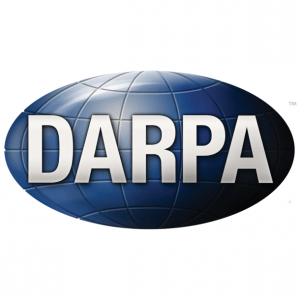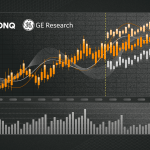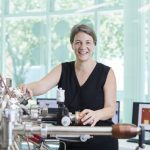Quantum News Briefs June 24: Google claims ‘quantum advantage’ for machine learning, DARPA funds second phase of “Penning trap” QC research, MIT’s quantum sensor, Amazon Braket & MORE

Quantum News Briefs opens today with Google’s claims of ‘quantum advantage’ for machine learning followed by news of DARPA’s second round of funding for a quantum computing project to “. .expand the utility of emerging technology. .”. Arqit’s partnership with Blue Mesh Solutions Limited, a UK-based sensors and IoT specialist is covered as well as an update on Amazon Braket and MORE.
Google Claims “Quantum Advantage” for Machine Learning
 Google’s AI researchers claim they’ve achieved quantum advantage in the field of machine learning.
Google’s AI researchers claim they’ve achieved quantum advantage in the field of machine learning.
The milestone was reached on Google’s quantum computer Sycamore, the researchers said, which completed a series of learning tasks using a quantum learning algorithm that analyses the output of quantum sensors. “Unlike previous quantum advantage demonstrations, no advances in classical computing power could overcome this gap,” the researchers who carried out the experiment wrote. “This is the first demonstration of a provable exponential advantage in learning about quantum systems that is robust even on today’s noisy hardware.”
The team demonstrated their quantum learning agent was able to also perform exponentially better than classical machine learning on other tasks not involving quantum data.
The Google team found their quantum computer was “exponentially better” at analysing traditional data than a classical machine.
“This experimental work represents the first demonstrated exponential advantage in quantum machine learning,” the authors wrote. “This type of quantum learning advantage cannot be challenged, even by unlimited classical computing resources.”
*****
DARPA Probing Quantum Computing Capabilities
 The Defense Advanced Research Projects Agency recently funded the second phase of a quantum computing project that aims to expand the utility of emerging technology, according to one of the lead researchers on the project. The DARPA project — Optimization with Noisy Intermediate-Scale Quantum devices — aims to “demonstrate the quantitative advantage of quantum information processing by leapfrogging the performance of classical-only systems in solving optimization challenges.”
The Defense Advanced Research Projects Agency recently funded the second phase of a quantum computing project that aims to expand the utility of emerging technology, according to one of the lead researchers on the project. The DARPA project — Optimization with Noisy Intermediate-Scale Quantum devices — aims to “demonstrate the quantitative advantage of quantum information processing by leapfrogging the performance of classical-only systems in solving optimization challenges.”
The second phase of the Georgia Tech Research Institute-led project brought its funding total to $9.2 million for the scientists to run additional experiments on a quantum computing system configured to potentially string together more computing units than ever. While most quantum computing systems use magnetic traps to isolate ions, one of the team’s researchers, Brian McMahon, developed a “unique” configuration optimized for a more efficient process. The trapping process — called a Penning trap — uses a combination of a magnetic field and an electric field to confine two-dimensional ion crystals that perform quantum operations.
The team has already put in 18 months of trials and experiments. During that time, researchers built an ion chain the length of 10 qubits.
The research team includes scientists at Oak Ridge National Laboratory, who are using a supercomputer there to map the best pathway to minimizing noise in the quantum system as it is scaled up.
*****
Arqit & Blue Mesh Solutions Successfully Demo Quantum Secure MQ Telemetry Transport Service for Industrial IoT
 Arqit Quantum Inc. (“Arqit”) and Blue Mesh Solutions Limited (“Blue Mesh”), a UK-based sensors and IoT specialist, recently completed and demonstrated a Quantum Secure “MQTT” (MQ Telemetry Transport) service for Industrial IoT.
Arqit Quantum Inc. (“Arqit”) and Blue Mesh Solutions Limited (“Blue Mesh”), a UK-based sensors and IoT specialist, recently completed and demonstrated a Quantum Secure “MQTT” (MQ Telemetry Transport) service for Industrial IoT.
Arqit and Blue Mesh collaborated to integrate Arqit’s QuantumCloud™ to secure sensor network equipment through a security enhancement to an internationally standardised protocol known as MQTT which is a ubiquitous method used for sending data from Industrial IoT devices to cloud servers for data manipulation and analysis.
Adding a security layer to the existing MQTT standard increases the protection of IoT systems used in strategic assets such as ports, petro-chemical industries and rail networks.
Managing Director for Blue Mesh Solutions, Richard Brooks said: “Having the opportunity to work with Arqit’s QuantumCloud™ to build the world’s most secure over-the-air IoT Sensor Data Solution is hugely important for the future of IoT, artificial intelligence, condition monitoring, autonomous transport and any number of digital systems that require the highest level of asset and data security. By increasing IoT data security to a quantum secure level, we can help to protect all power, chemical, transport and energy assets that need the highest level of operational data security.”
*****
U.S. Researchers Discover Quantum Sensor That Can Detect Any Electromagnetic Pulse
 Researchers at the Massachusetts Institute of Technology (MIT) have developed a method that allows them to measure nanometer-scale features at any arbitrary frequency. Precision measurements in materials science and fundamental physics have been made possible by quantum sensors, which detect the most minute variations in magnetic or electrical fields. However, these sensors can only detect a few specific frequencies of these fields, limiting their utility.
Researchers at the Massachusetts Institute of Technology (MIT) have developed a method that allows them to measure nanometer-scale features at any arbitrary frequency. Precision measurements in materials science and fundamental physics have been made possible by quantum sensors, which detect the most minute variations in magnetic or electrical fields. However, these sensors can only detect a few specific frequencies of these fields, limiting their utility.
The new system that the team made, which they call a “quantum mixer,” uses a beam of microwaves to add a second frequency to the detector. This changes the frequency of the field being studied into a different frequency. This simple process lets the detector home in on any frequency it wants, and it doesn’t change the sensor’s ability to see things on a nanoscale. This simple procedure allows the detector to zero in on any desired frequency while maintaining the sensor’s nanoscale spatial resolution. Because it can make a variety of frequencies of electrical or magnetic activity accessible at the level of a single cell, the technology may enable new biomedical applications.
Using present quantum sensing technologies, it would be exceedingly difficult to get a usable resolution for such signals. Using this method, it may be able to identify output signals from a single neuron in response to a stimulus. The new system could potentially be used to characterise the behaviour of exotic materials, such as 2D materials, whose electromagnetic, optical, and physical properties are being intensively researched.
*****
Braket Is Built, and They Will Come
 Amazon’s Braket cloud service has showed itself as a very active platform for quantum developments. Such access to hardware and software via the cloud helps move quantum computing forward writes Jack Vaughan in Venture Beat.
Amazon’s Braket cloud service has showed itself as a very active platform for quantum developments. Such access to hardware and software via the cloud helps move quantum computing forward writes Jack Vaughan in Venture Beat.
Amazon is working to support quantum software tooling on its cloud keeps things in motion ahead of the arrival of its own fault-tolerant quantum computer. Work on that machine is underway at the AWS Center for Quantum Computing at Caltech, which opened last October. Richard Moulds, general manager of Amazon Braket. Moulds emphasizes that much of the activity in quantum computing includes simulations that tap into classical computers. In that sense, “there’s very tight binding between classical and quantum computers,” he said.
To ease those efforts, the company recently launched a new feature in Amazon Braket Hybrid Jobs that lets users run so-called hybrid workloads with simulators that are embedded within the algorithms that developers code to. An example is Xanadu’s PennyLane Lightning GPU simulator, which is accelerated by NVIDIA’s cuQuantum library.
“What we do is we make it easy for customers to use classical computers alongside quantum computers,” Moulds said.
Cloud’s ready accessibility can speed the process of trying out algorithms on different hardware.
For customers of Tel-Aviv, Israel-based Classiq, which has built a platform for designing, synthesizing and analyzing quantum circuits, Amazon Braket provides a kind of portal to test out such ideas.
Services like Amazon Braket let customers bypass some project obstacles common during the longer history of high-performance computing (HPC), an area quantum computing resembles in many ways.
*****
Sandra K. Helsel, Ph.D. has been researching and reporting on frontier technologies since 1990. She has her Ph.D. from the University of Arizona.



















